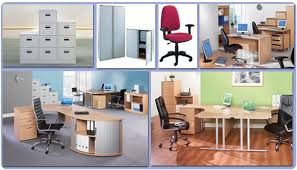The present smart outside furniture plans may require a twofold take to remember they are not implied for indoor-living extravagance. Furniture supplies planners have endeavored to fulfill buyers’ cravings for exquisite outside pieces that go past the garden seat. Presently, the industry is reacting to the ecologically cognizant want to keep up dazzling plans in economical open air furniture. The 2013 Green Home Furnishings Study directed by the Sustainable Furnishings Council found that 45.2 percent of respondents said they were “unquestionably intrigued” in purchasing green home goods in the event that they preferred the style and the expense was tantamount to different choices. An aggregate of 84.6 percent of respondents said they were in any event “potentially intrigued.” The gathering’s official executive, Susan Inglis, says that green comes in various shades for eco-accommodating furniture. “Manageability is a triple-primary concern,” Inglis says. “It’s about what’s useful for biological systems on our planet, what’s useful for networks, and what’s useful for economies.”
In reality, supportability manages numerous material and social concerns including, protection, landfills and social value. At the point when natural concerns developed among people in general in the 1980s, reusing turned into the prime exertion to secure the earth. This development achieved an abundance of high-thickness polyethylene reused plastic as drain containers and different holders. In 1990, proprietors of Syracuse, Indiana-based Poly-Wood found an imaginative use for reused drain containers by expelling them into plastic timber for open air furniture. The organization’s first outline, an Adirondack seat made of the reused plastic, was a hit and proceeds as a blockbuster for the organization, says Vice President Brady Maller.
“We discover a great deal of chance to get extremely delightful shapes,” Maller says of the outline procedure with HDPE. Further, HDPE doesn’t twist like different plastics and is impenetrable to almost a wide range of climate conditions. Maller likes to discuss the “generational” nature of Poly-Wood furniture. Toward the finish of its valuable life, the item, produced using recyclable material, is a recyclable item itself, Maller says.
Loll Designs, a reasonable open air furniture producer in Duluth, Minnesota, likewise got its begin with an Adirondack seat. Authors Greg Benson, Dave Benson and Tony Ciardelli considered Loll as an approach to repurpose the overabundance 100-percent reused and recyclable HDPE utilized by their unique organization, TrueRide, which planned and fabricated skateboard parks. Furniture pieces were settled into similar sheets of HDPE used to deliver skatepark inclines and segments. Three years of prototyping went into the main Loll Adirondack before it propelled at retail in 2006.
Loll currently creates a scope of open air furniture, including seats, seats, tables and different adornments, produced using the equivalent reused material, sourced fundamentally from drain container holders. “We accept by utilizing 100-percent reused and recyclable material we are supporting and advancing eco-activities/principals that we share and make progress toward, including reuse, reuse, and supporting USA-sourced and USA-made items,” says originator Greg Benson. “Our items keep material out of the landfill and furthermore lessen the measure of new plastic being made.”
For each pound of weight in a Loll seat, roughly eight reused drain containers are being recovered. The organization gauges it has repurposed in excess of 35 million reused containers in its furniture since 2005. The drain container provenance, in any case, gives a false representation of HDPE’s solidness. “Our material is likewise substantial,” Benson says. “The normal weight of an Adirondack seat is roughly 50 pounds so your furniture won’t blow around.” 
